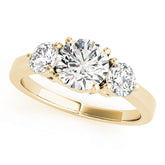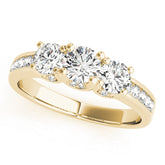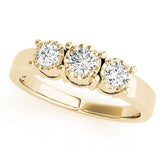The Hope Diamond’s Mystery & Curse
Natural fancy colour diamonds are admired for their exquisite abundance of colour in any imaginable hue. One of the most mysterious and storied among them is the legendary Hope Diamond.
No doubt, the Hope Diamond is one of the most prominent diamonds of all time. It's also known as the king of jewels, "Le Bijou du Roi," and France's Blue, "Le bleu de France." Another name for it is the Tavernier Blue. The Hope Diamond is 45.52 carats and has a beautiful deep blue hue. With all its elegance, many believe it’s cursed.
The notorious diamond has reportedly been stolen at least twice in its long and rich history. Since its discovery in India in 1642, it has changed hands many times—often bringing misfortune. Here are some of the myths, legends, and victims associated with the mysterious Hope Diamond:
1666: Jean-Baptiste Tavernier

The Tavernier Blue, a 115.16-carat blue diamond, was reportedly stolen from a Hindu statue, where it served as one of the eyes. Jean-Baptiste Tavernier, a 17th-century French gem dealer, was said to have taken it. Legend says the priests cursed whoever stole the gem. Tavernier supposedly developed a raging fever shortly after and died. Other accounts claim he lived to age 84.
1668: King Louis XIV

The diamond was sold to King Louis XIV, who had it recut to 69 carats and renamed it "French Blue." He later died of gangrene.
The 1600s: Nicholas Fouquet

Fouquet was a courtier who allegedly wore the diamond and later fell from grace. He was imprisoned for life and believed by some to be the real "Man in the Iron Mask."
The 1700s: Louis XVI and Marie Antoinette

The diamond passed to Louis XVI and Marie Antoinette. Both were executed during the French Revolution—rumoured to be victims of the curse.
The 1700s: Marie-Louise, Princess de Lamballe

A confidante of Marie Antoinette, she briefly wore the diamond and was later brutally murdered during the Revolution.
1791: Wilhelm Fals

A Dutch jeweller who re-cut the diamond into its current form. His son allegedly killed him and then himself after stealing the gem.
The 1900s: Simon Maoncharides

A Greek merchant who owned the diamond briefly before selling it to Pierre Cartier. He died in a car crash soon after.
1912: Evalyn Walsh McLean

A wealthy heiress who wore the diamond on her dog’s collar. Her life spiraled into tragedy, with deaths in her family, divorce, financial ruin, and her own death under debt.
1958: James Todd

Todd, the mailman who delivered the diamond to the Smithsonian, was injured in multiple accidents and suffered personal tragedy afterward.
Where is the Hope Diamond Today?

Today, the Hope Diamond is on display in the National Gem and Mineral Collection at the Smithsonian Museum of Natural History in Washington, D.C. Estimated at $250 million (R3.7 billion), it remains one of the most valuable and visited diamonds in history.








